Pencil Drawing Ideas – Pencil drawing is a versatile and expressive form of art that allows artists to explore a wide range of subjects and styles using just a simple graphite pencil. When it comes to generating pencil drawing ideas, the possibilities are endless, catering to both beginners and experienced artists. Popular themes include still life drawings, such as fruit bowls, flowers, or everyday objects, which help improve shading and observational skills.
Portraits of people and animals are also common, challenging artists to capture emotions and fine details like hair texture and facial expressions. Nature scenes, including landscapes, trees, and mountains, offer opportunities to practice depth and perspective. For those inclined toward fantasy or imagination, surreal or abstract concepts—like dreamscapes, mythical creatures, or fantasy architecture—can unleash creativity beyond the limits of reality. Additionally, urban sketches, cartoon characters, and cultural or historical themes can serve as both fun and educational exercises. Pencil drawing ideas can also stem from emotions or personal experiences, making the artwork deeply meaningful. The beauty of pencil art lies in its simplicity and ability to express complex visuals with minimal tools, making it a rewarding outlet for creativity and artistic development.
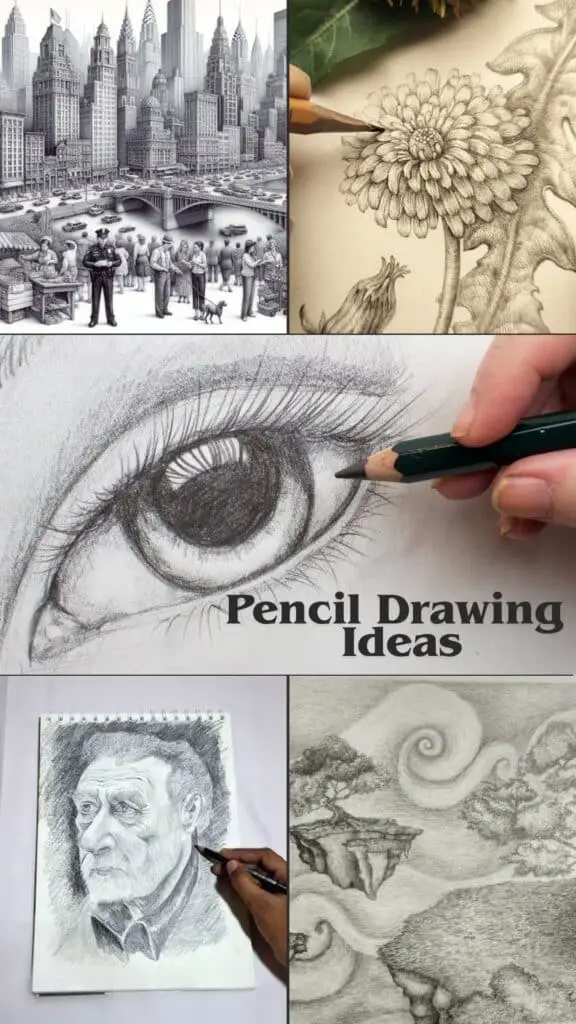
Pencil Drawing Ideas
Realistic Eye Study
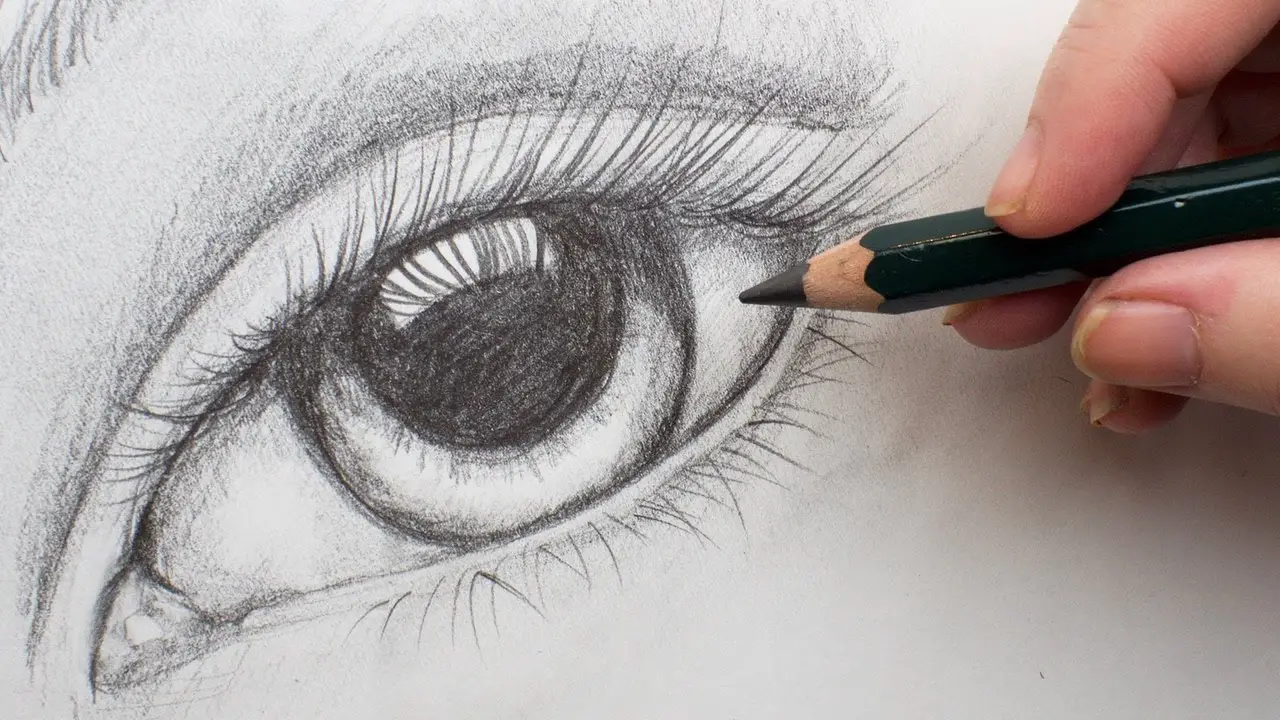
Drawing a realistic eye helps artists understand texture, light reflection, and anatomy. Focus on the intricate details: the iris pattern, eyelashes, shadows under the eyelid, and the glossy highlight. Use soft graphite for shading and harder pencils for fine lines. This study enhances skills in blending and detailing, offering a small but complex subject that’s excellent for practice. Try drawing eyes of different ages and ethnicities to improve versatility.
Cityscape at Night
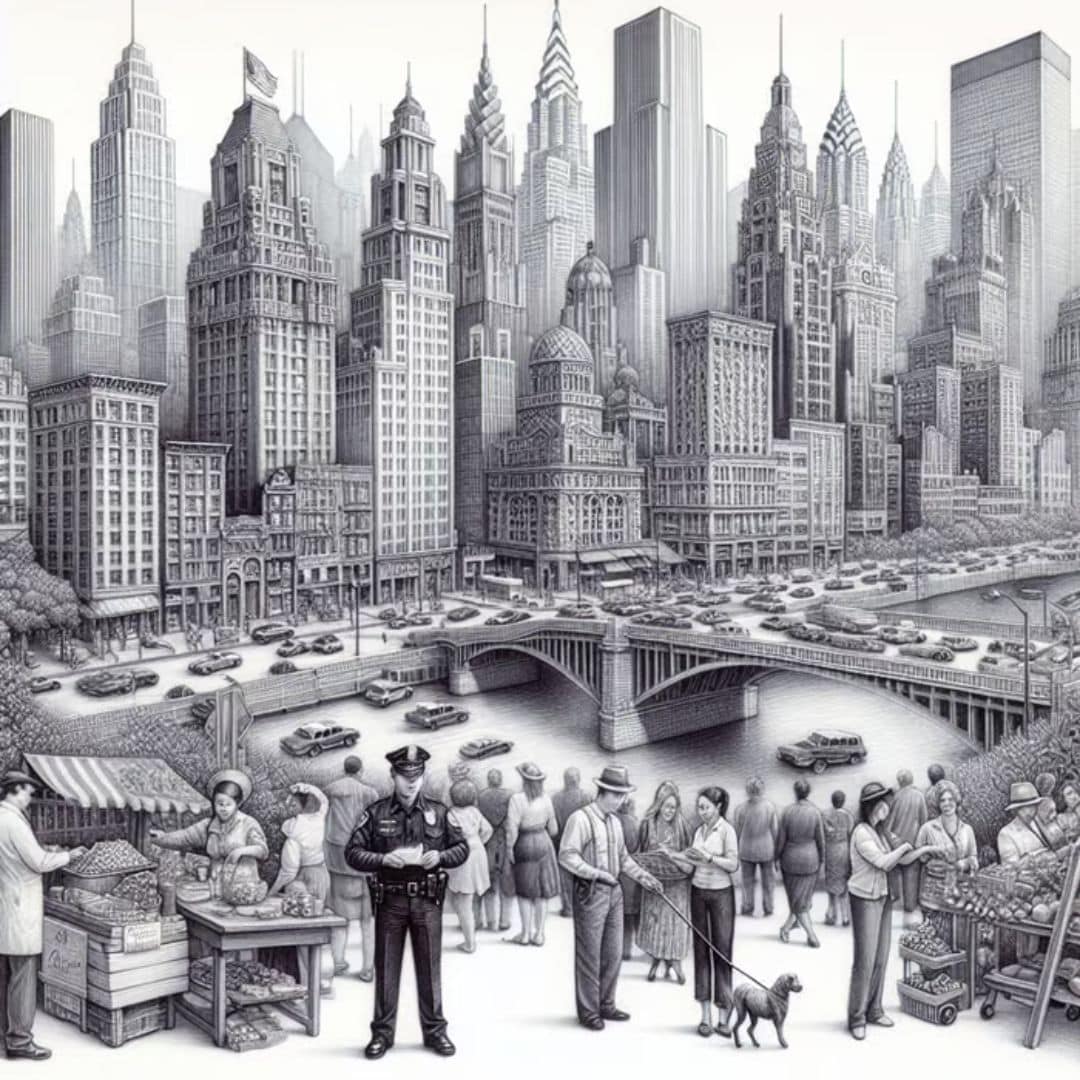 Credit @Easy-Peasy.AI
Credit @Easy-Peasy.AI
Sketching a city at night provides contrast-rich compositions with glowing lights and dark silhouettes. Capture skyscrapers, streetlights, reflections in puddles, and the shadowy outlines of buildings. Work on rendering glowing effects with erasers and dark shadows using soft pencils. This drawing idea enhances architectural drawing, perspective, and contrast control, teaching how to capture mood and atmosphere effectively.
Animal Portraits
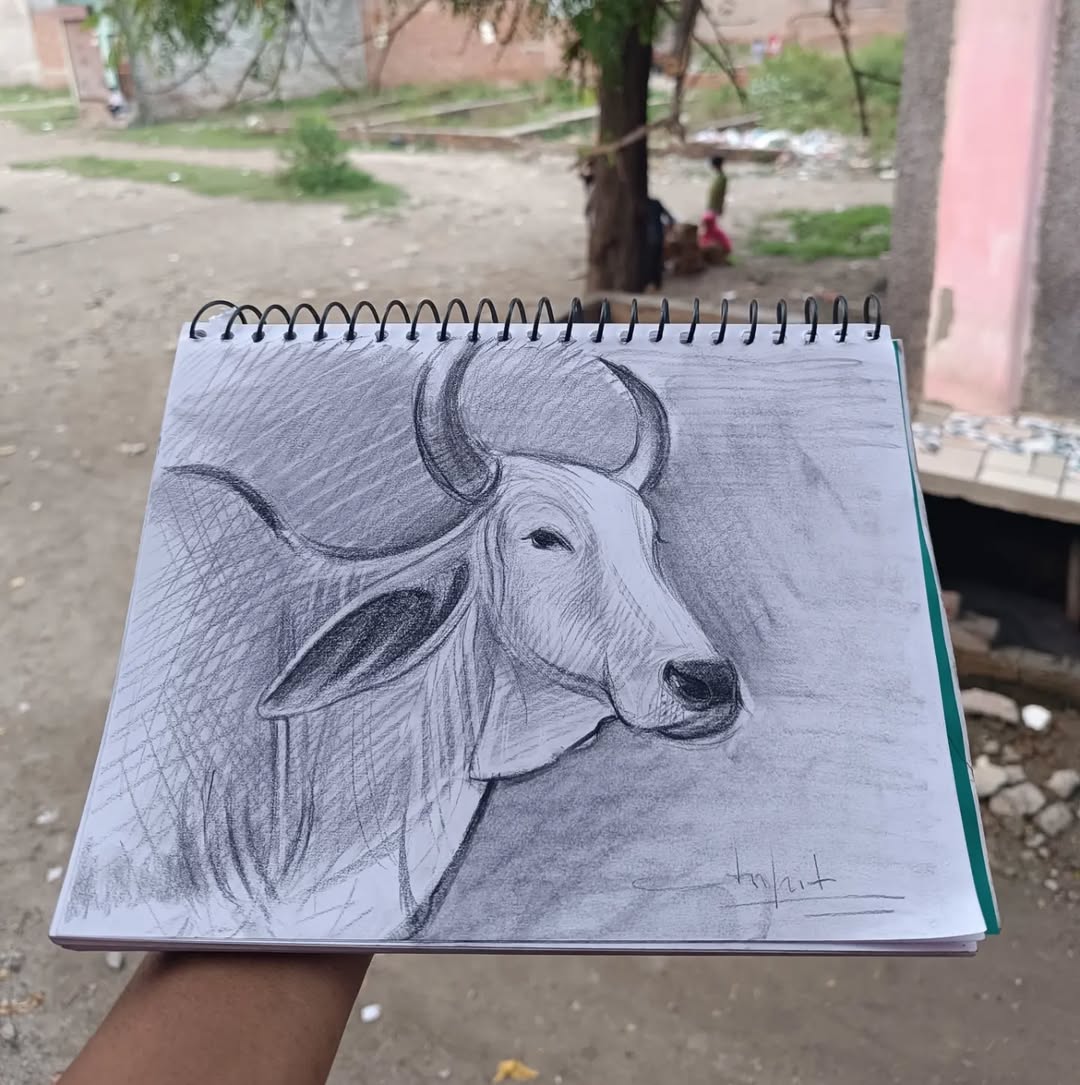 Credit @its_theankit
Credit @its_theankit
Pencil-drawing animals—like a cat, horse, or tiger—focuses on texture and emotion. Practice rendering fur, scales, or feathers with directional strokes. Capture the animal’s personality through its eyes and posture. Pay close attention to shading and highlights to create lifelike textures. This drawing boosts observational skills and helps you practice conveying softness or ruggedness through pencil techniques.
Surreal Landscape
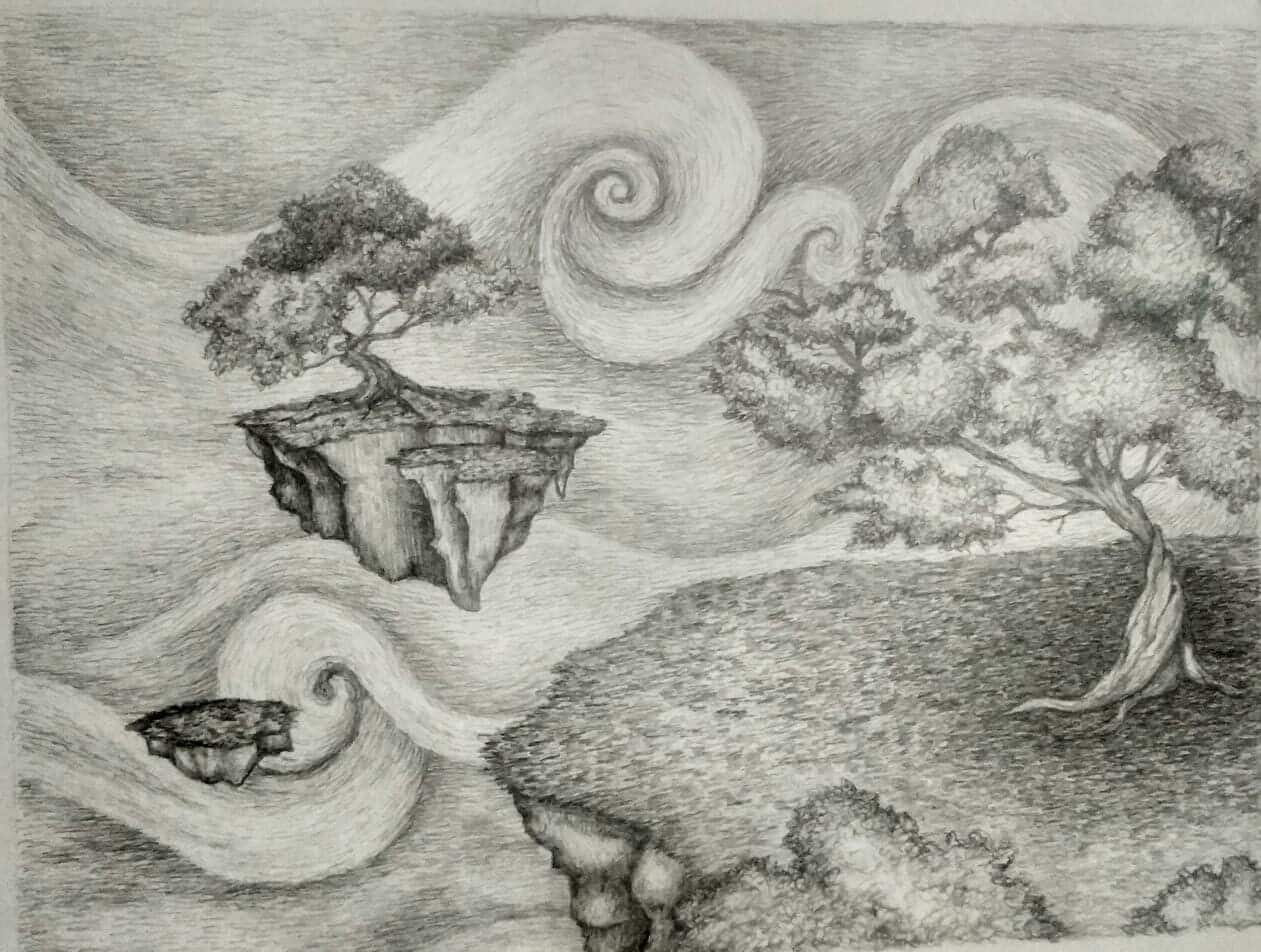 Credit @ArtStation
Credit @ArtStation
Combine elements from dreams or imagination to create a surrealistic landscape. Think of floating islands, twisted trees, giant mushrooms, or buildings melting into mountains. This exercise sparks creativity and imagination. Focus on perspective and transitions between real and surreal elements. Surreal drawing allows freedom to break rules and explore subconscious thoughts visually, enhancing conceptual depth in your work.
Human Hands in Motion
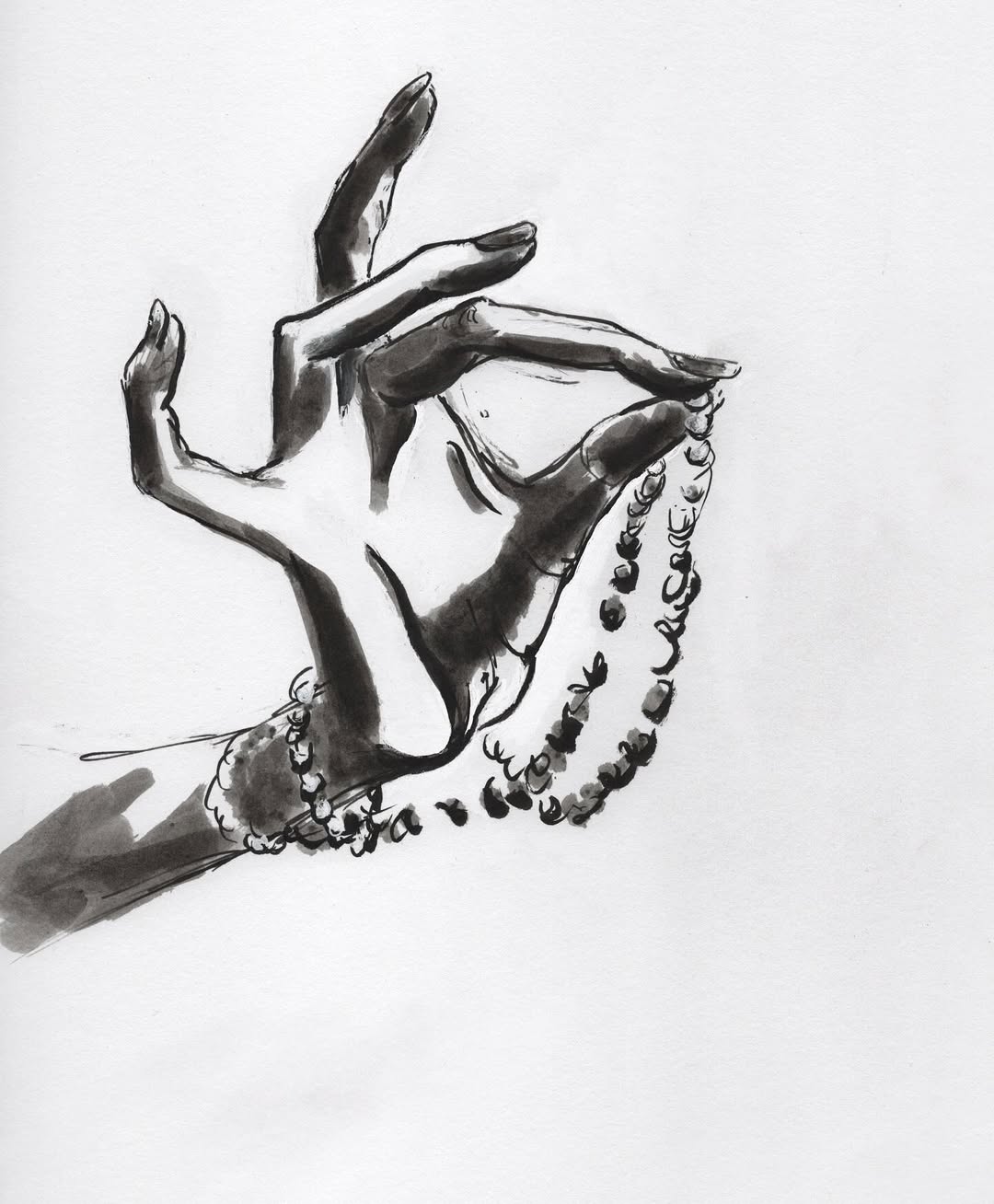
Hands are among the most expressive parts of the human body. Draw hands in various poses—holding objects, gesturing, or relaxed. Use light lines for initial structure, then build up shadows to indicate tendons and bone structure. This will improve anatomy understanding, gesture drawing, and shading. Hands are complex, so repeated practice here greatly improves overall figure drawing.
Architectural Ruins
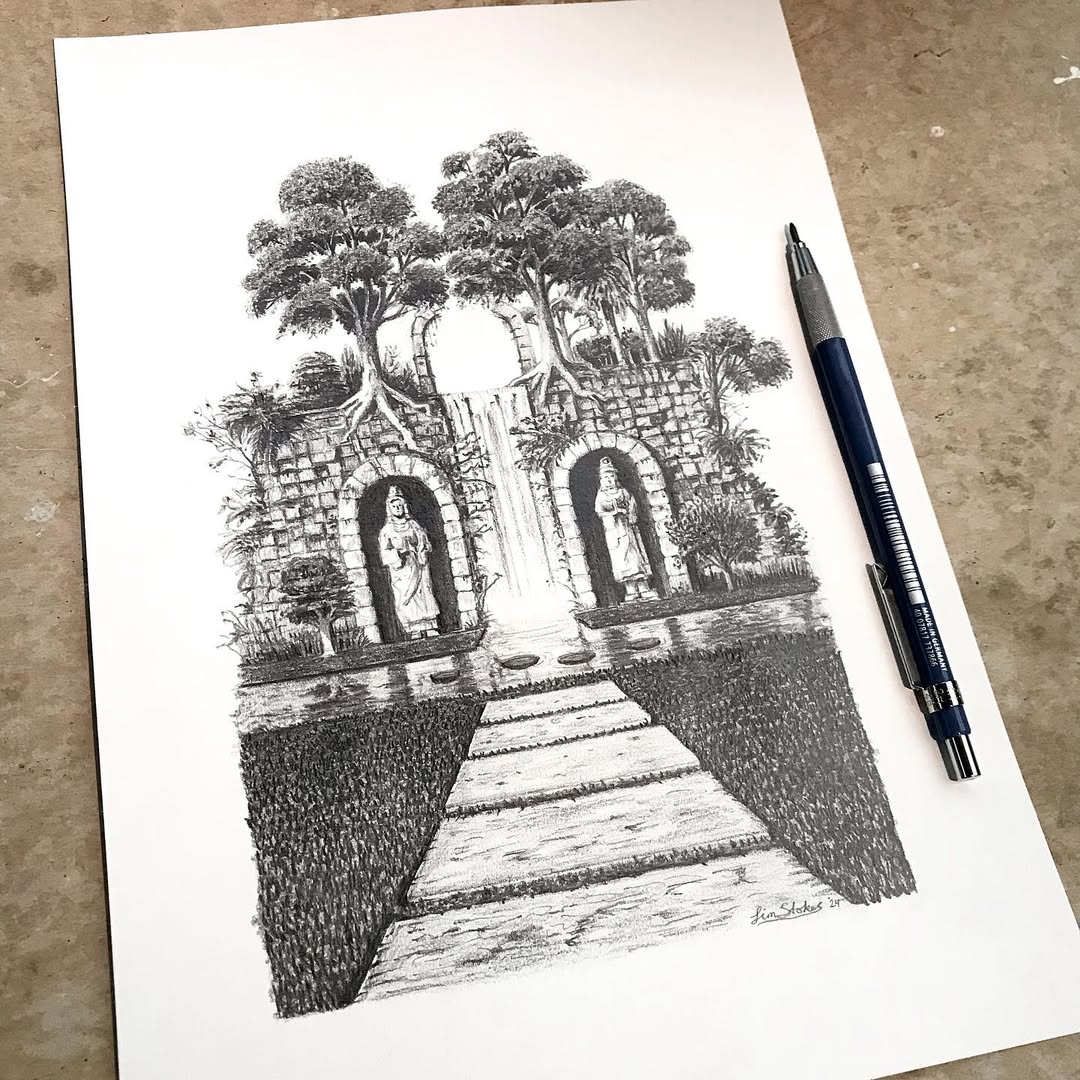
Sketching ruins—like ancient temples or abandoned buildings—teaches structural drawing, texture rendering, and atmospheric perspective. Cracks, broken walls, vines, and weathered surfaces provide excellent subjects for pencil shading. Incorporate lighting for mood: early morning fog or dramatic shadows. This exercise sharpens your eye for composition and historical texture, perfect for storytelling through art.
Portrait of an Elderly Person
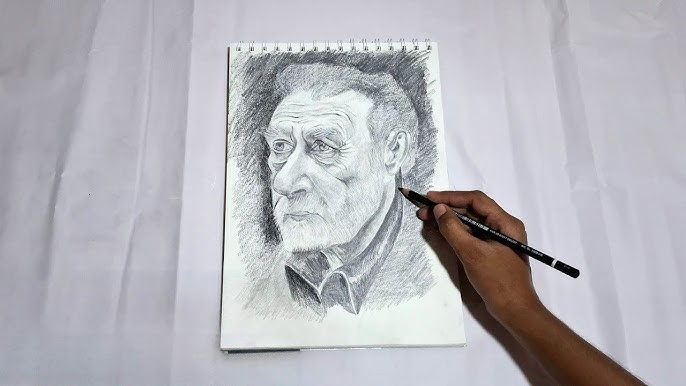
Drawing older faces introduces textures like wrinkles, sagging skin, and expressions filled with life experience. Such portraits offer character-rich subjects and help improve shading, texture, and facial anatomy. Use soft pencils to shade gently and create depth in folds and features. Focus on the eyes and mouth to capture emotion. These portraits are ideal for practicing fine detail and human emotion.
Botanical Illustration
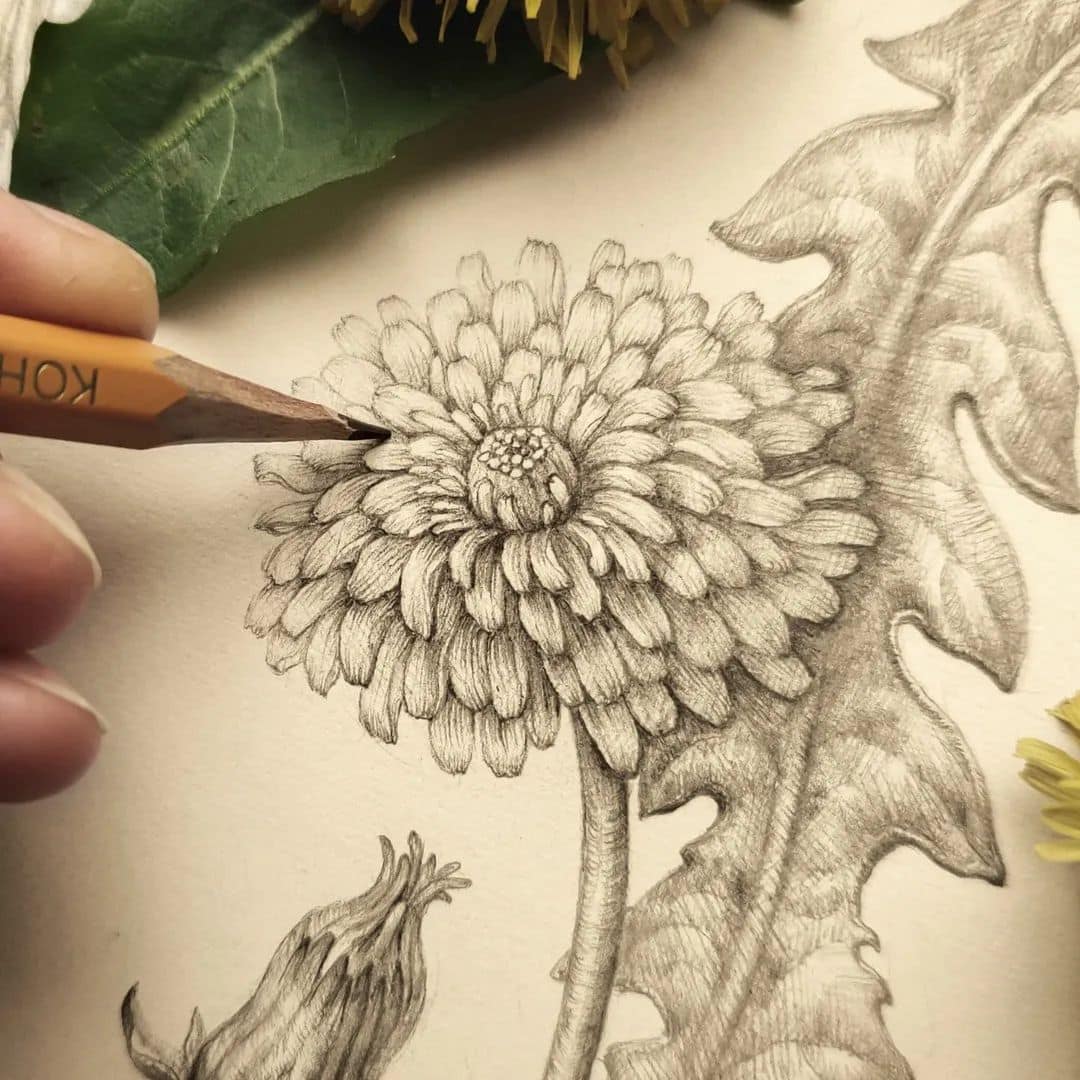 Credit @vladabotanica
Credit @vladabotanica
Choose a plant or flower and illustrate it in scientific detail. Focus on leaf veins, petal textures, and stem structure. Use cross-hatching, stippling, and soft shading to replicate natural patterns. Botanical drawing enhances observation and accuracy. Try drawing multiple stages—budding, blooming, and wilting—to show lifecycle. This exercise refines your attention to detail and your ability to capture delicate structures.
Mechanical Object Cross-Section
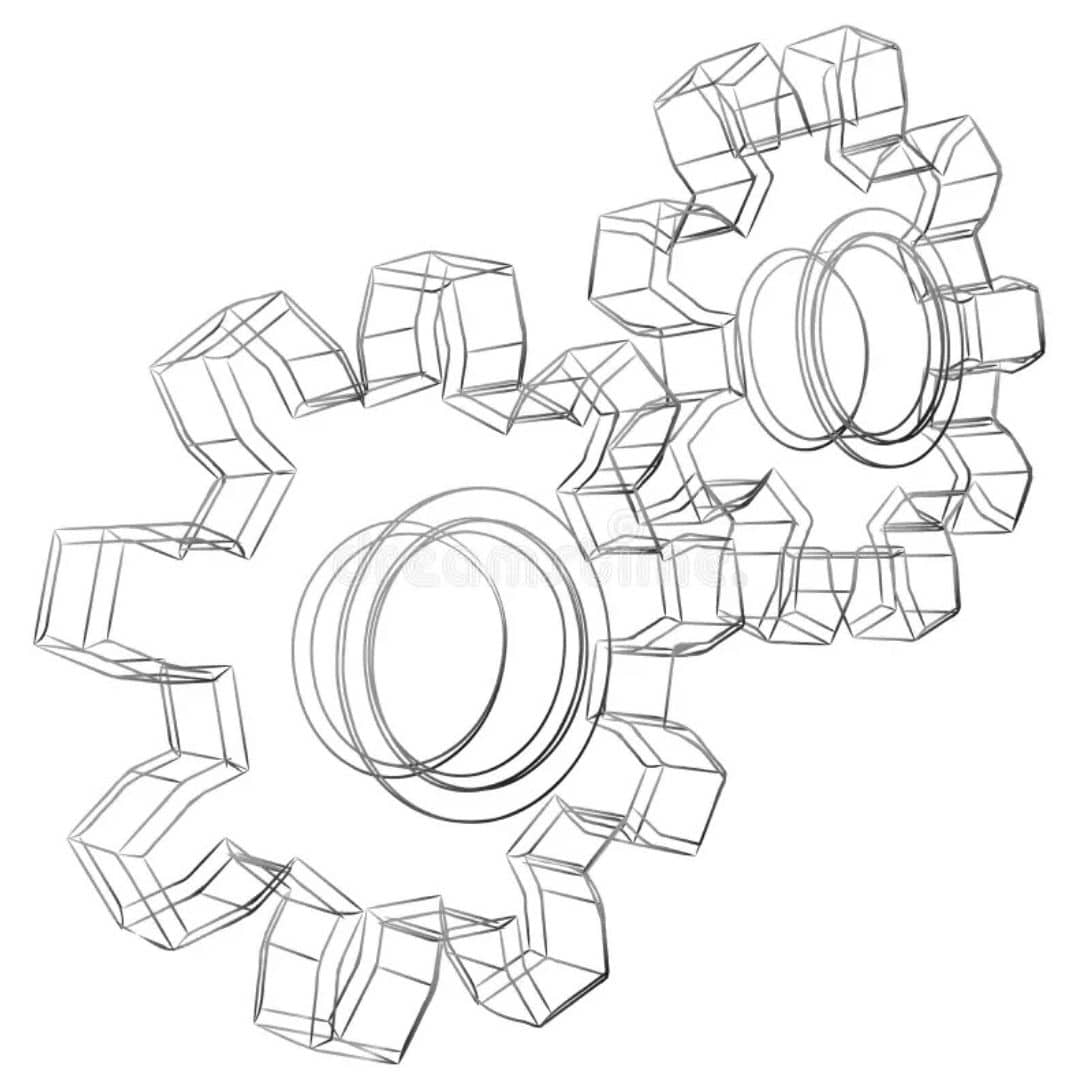
Draw a cross-section of a machine—like a watch, engine, or camera. Reveal internal parts and components, labeling if desired. This drawing idea improves technical drawing skills and spatial awareness. Use clean lines and precise shading to represent metallic surfaces and internal structures. Mechanical drawing demands accuracy and patience, teaching valuable discipline and layout planning.

Hi, I’m Maggie Culp, the founder of PartyVibesFun.com, based in North Little Rock, Arkansas, United States! With a passion for creating unforgettable celebrations, I specialize in turning any event into a fun and vibrant experience. From birthday parties to themed gatherings, I’m here to help you bring your party ideas to life with ease and excitement. Whether you’re looking for unique games, creative themes, or party planning tips, I’m dedicated to making sure every moment of your event is filled with joy. Let’s create memories together and make your next party the talk of the town!
